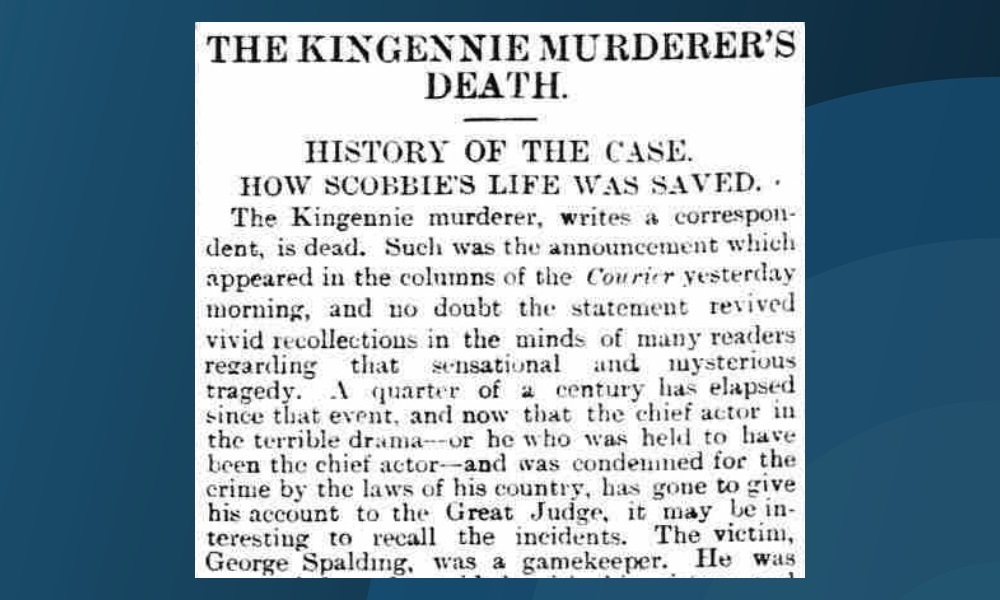A man of horror, possessed of a determined bloodlust, shattered community cohesion in Kingennie, Angus, in 1872.
Those who gazed at him were left speechless by his repulsive appearance. He stole and murdered before leaving Kingennie a broken village.
This ogre-like being slipped into the woods on a thieving spree on Tuesday, September 24, 1872, igniting a chain of events that would focus UK-wide attention on Kingennie.
Less than 24 hours after the arrival of this repugnant brute, the broken body of gamekeeper George Spalding was found under a hedge near what is now Grange Road, yards from Ethiebeaton farmhouse.
The case made headlines in the Dundee press but, according to former Dundee librarian Alexander Hastie Millar, the murder propelled journalism into the modern age. Newspapers sensed an appetite for the sensational and the Kingennie case drew an audience from across Britain.
Spalding, 42, lived with his father Richard, 82, sisters Jean and Susan and nephew, George, 11. In late afternoon, Susan noticed shirts were missing from the clothes lines shortly after she had seen a tramp pass.
George, his retriever Juno and his nephew went in pursuit. Young George returned saying his uncle had found someone. Jean saw her brother on his way to Monifieth police station with the man.
About 8.30pm, Juno returned alone. The family were used to George working overnight so were untroubled. But by 8am with no sight of George, they became alarmed.
Susan and George went to look for the gamekeeper. They followed a path to the North Grange and South Grange estates boundary where Juno became excited.
As they turned for home, the dog let out a great yowl. This led them to a bush where they found George lying with grass over his face. He had been strangled and his head was smashed by a rock.
Suspicion fell on the tramp but the police had to find him. The one clue was his appearance. He was so hideously ugly that one field worker who saw him was rendered speechless.
Police homed in on a man in Dundee of such appearance Thomas Scobbie, known as Bonnie Scobbie. His trunk was searched. Trousers pierced by a dog’s teeth and blood-stained clothing were found.
Scobbie was taken to Kingennie where he was identified before the old Scottish legal form of confronting the accused with his victim was evoked. Spalding’s coffin was prised open but Scobbie declared he was no murderer.
A jury thought otherwise and Scobbie was found guilty. The jury asked for mercy but Lord Deas ordered Scobbie to be hanged on Tuesday April 29.
A petition of 4,321 people was raised in Dundee demanding mercy. On April 25, 1873, mercy was shown and Scobbie was jailed.
But compassion was not the motivation it was to cover up a legal blunder. Lord Deas had failed to realise there would not be a Tuesday April 29, for six years.
